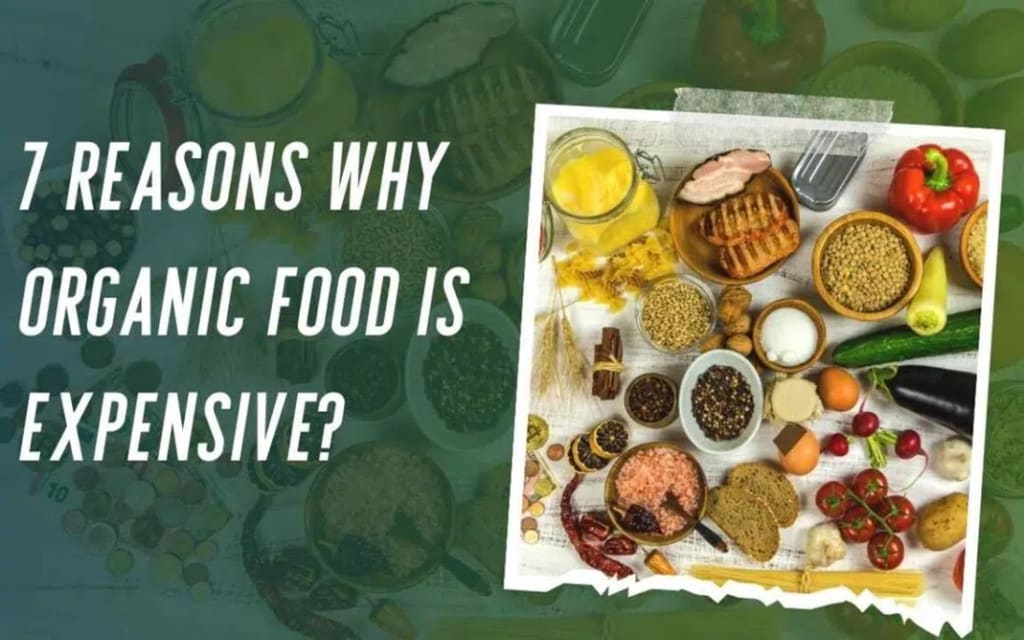7 Reasons Why organic food is expensive?
7 Reasons Why organic food is expensive?

Title: Understanding the Cost of Organic Food: 7 Reasons Behind Its Expense
In recent years, organic food has gained popularity for its perceived health benefits and environmental sustainability. However, one common concern that often arises is its high price tag compared to conventionally produced food. While the cost of organic food may deter some consumers, understanding the factors contributing to its expense can provide valuable insights. Here are seven reasons why organic food tends to be more expensive:
1. **Production Practices**: Organic farming entails adhering to strict guidelines set by certification bodies to ensure the use of natural methods and organic inputs. Unlike conventional agriculture, which relies heavily on synthetic pesticides and fertilizers, organic farming emphasizes techniques such as crop rotation, composting, and biological pest control. These practices often require more labor, time, and resources, leading to higher production costs for organic farmers.
2. **Certification Process**: Obtaining organic certification involves rigorous inspections, paperwork, and compliance with regulatory standards. Farmers must undergo extensive documentation and pay certification fees to accredited agencies, adding to the overall cost of production. The certification process ensures that organic products meet specific criteria regarding soil health, pest management, and the absence of synthetic chemicals, but it also adds to the financial burden borne by organic producers.
3. **Limited Economies of Scale**: Compared to conventional agriculture, organic farming typically operates on a smaller scale. While large-scale conventional farms benefit from economies of scale, allowing them to spread fixed costs over a larger output, organic farms often face higher per-unit costs due to their smaller size and lower yields. Additionally, organic farming requires more intensive management practices, further limiting economies of scale and contributing to higher prices for organic products.
4. **Higher Input Costs**: Organic farming relies on natural inputs such as organic fertilizers, compost, and non-synthetic pest control methods, which can be more expensive than their conventional counterparts. For example, organic fertilizers derived from compost or animal manure may cost more than chemical fertilizers produced through industrial processes. Similarly, organic pest control methods, such as beneficial insects or crop rotation, may entail higher expenses compared to synthetic pesticides. These higher input costs are passed on to consumers through the retail price of organic food.
5. **Lower Yields and Risk Management**: Organic farming often yields lower output per acre compared to conventional agriculture. Without the use of synthetic pesticides and genetically modified organisms (GMOs), organic crops are more susceptible to pests, diseases, and weed competition. As a result, organic farmers may experience higher production losses and lower yields, which can reduce overall profitability. To mitigate these risks, organic producers may need to invest in additional resources for pest control, crop rotation, and soil fertility management, further increasing the cost of production.
6. **Supply Chain Challenges**: The organic supply chain involves additional layers of certification, verification, and segregation to maintain the integrity of organic products from farm to fork. From sourcing organic inputs to transporting and storing organic goods, each step in the supply chain must meet organic standards and traceability requirements. These additional layers of scrutiny and quality control contribute to higher handling and logistics costs, which are ultimately reflected in the price of organic food.
7. **Market Demand and Premium Pricing**: As consumer demand for organic food continues to rise, retailers and producers may capitalize on this trend by charging a premium for organic products. Market forces of supply and demand play a significant role in determining the price of organic food, with consumers often willing to pay higher prices for perceived health benefits, environmental sustainability, and ethical considerations. While increased competition and economies of scale may eventually lead to lower prices for organic food, the current market dynamics contribute to its relatively high cost compared to conventional alternatives.
In conclusion, the higher cost of organic food can be attributed to a combination of factors, including production practices, certification processes, limited economies of scale, higher input costs, lower yields, supply chain challenges, and market demand. While organic food may command a premium price, many consumers view it as a worthwhile investment in their health, the environment, and sustainable agriculture practices. As the organic industry continues to evolve and innovate, efforts to address these cost-related challenges may help make organic food more accessible and affordable for consumers in the future.
About the Creator
Kavya Organic Garden
Passionate about home gardening, plant care, growth, and maintenance. Join me on this exciting journey of organic practices and sustainable gardening! 🌱






Comments
Kavya Organic Garden is not accepting comments at the moment
Want to show your support? Send them a one-off tip.